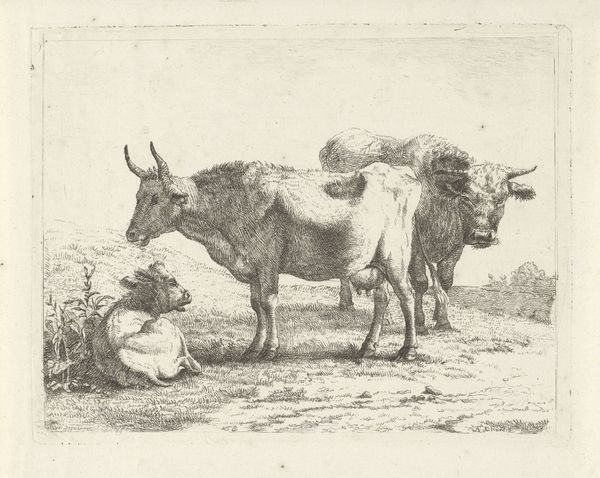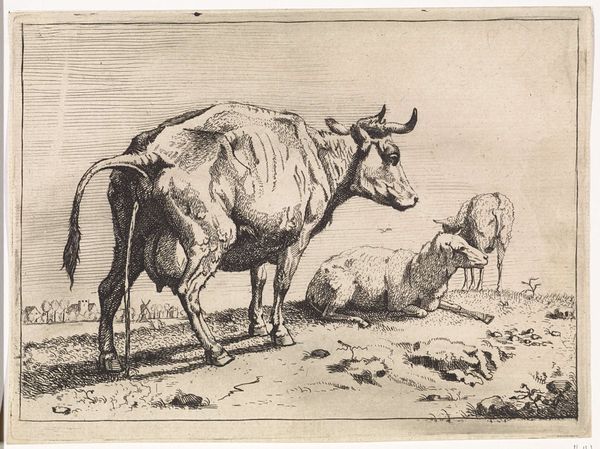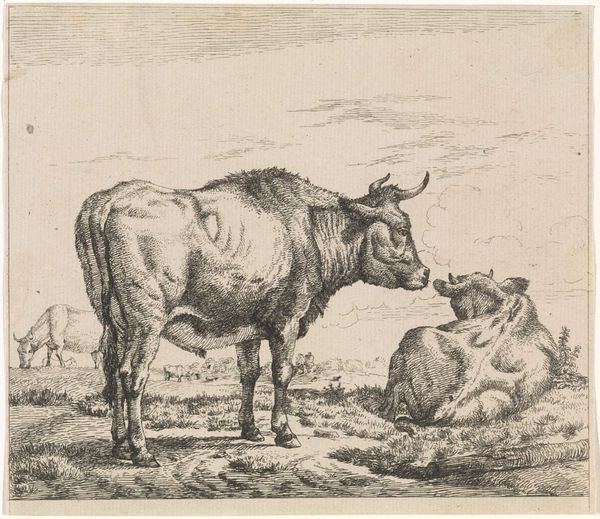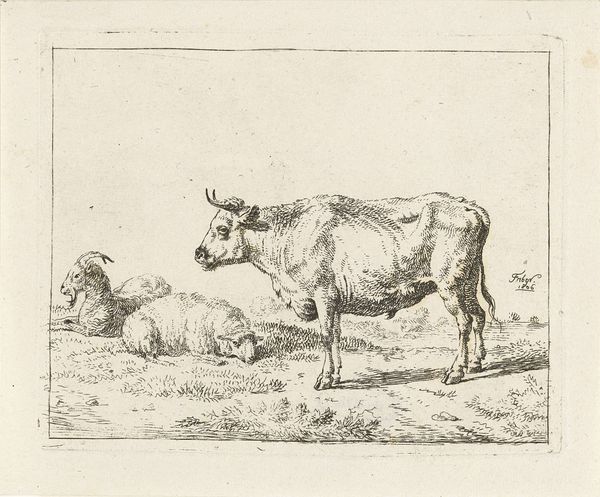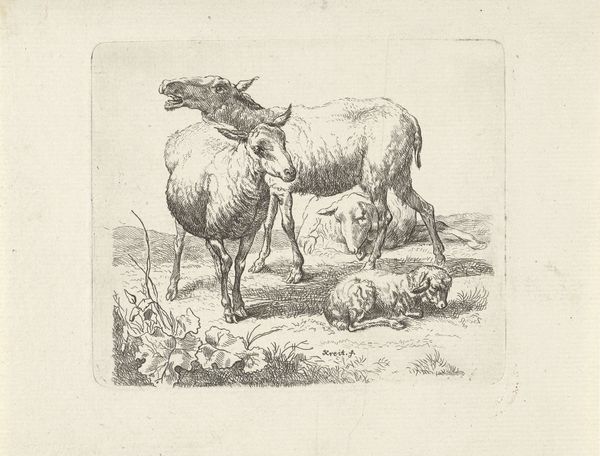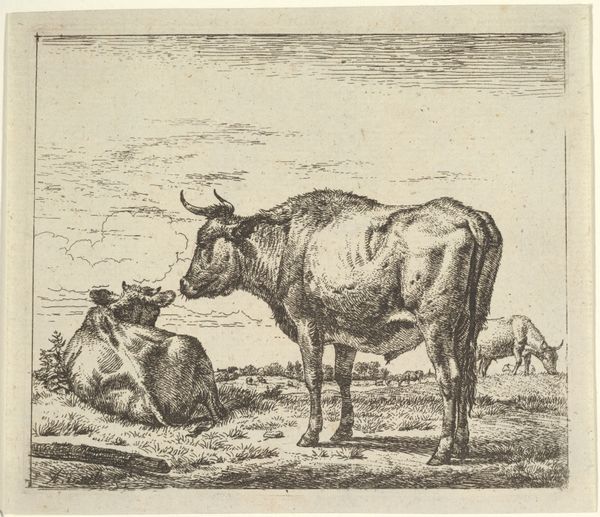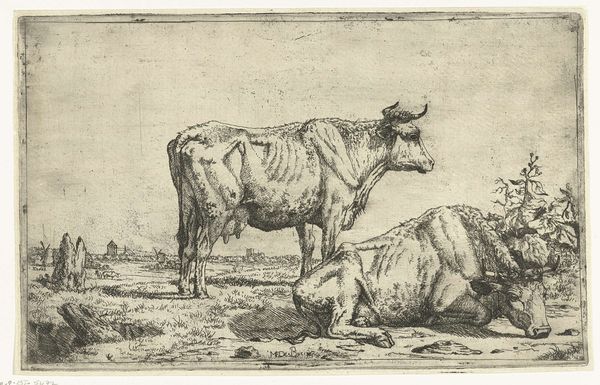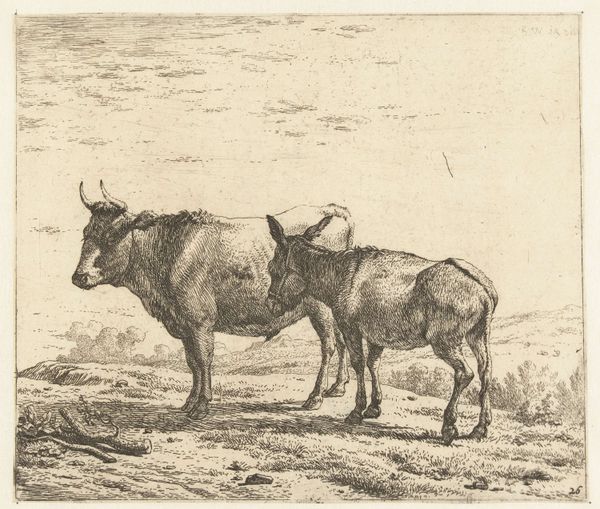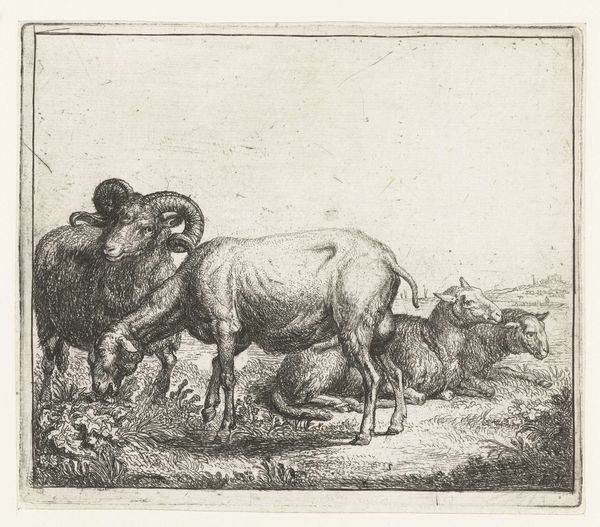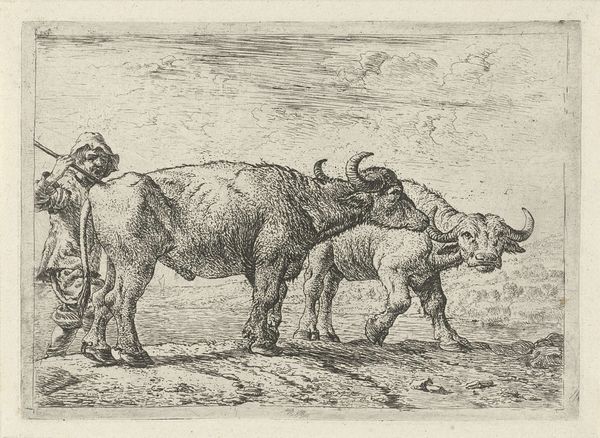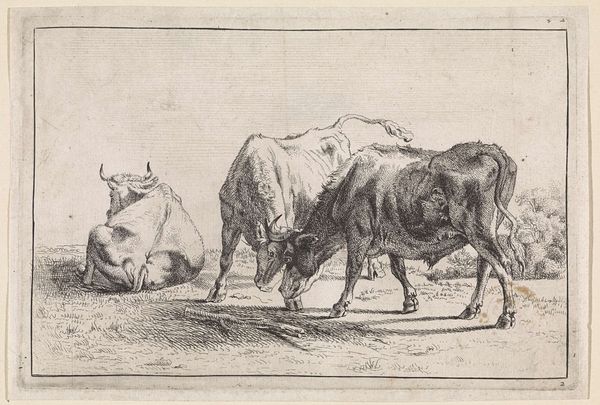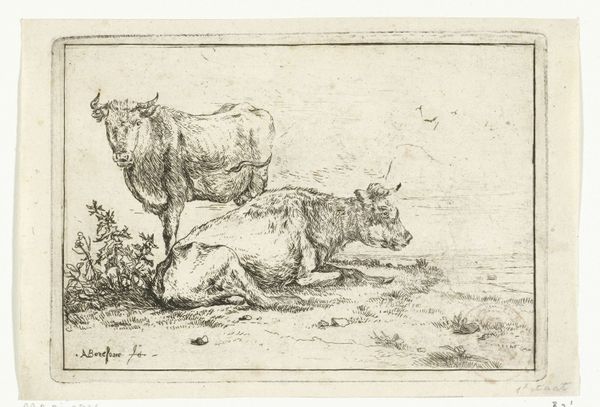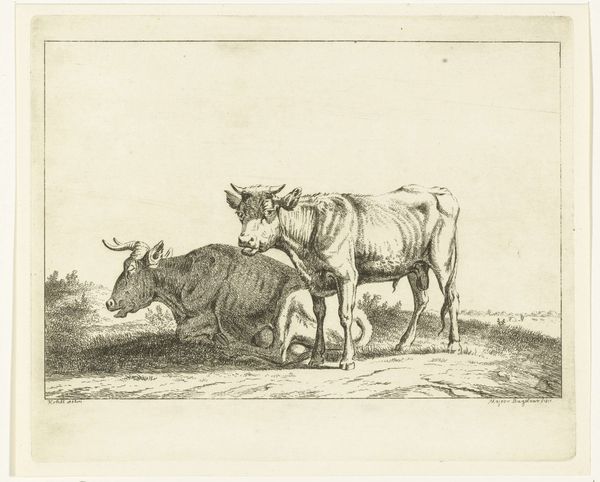
drawing, etching, pen
#
drawing
#
dutch-golden-age
#
pen sketch
#
etching
#
pencil sketch
#
landscape
#
figuration
#
pen
#
realism
Dimensions: height 99 mm, width 160 mm
Copyright: Rijks Museum: Open Domain
Editor: We're looking at Jan Kobell the Younger's "Two Sheep and a Bull by a Pool," likely made between 1788 and 1814, using pen and etching. I’m struck by the detailed rendering of the animals. It’s almost hyper-realistic. What compositional choices stand out to you? Curator: Observe how Kobell manipulates the light through the etching. Notice the concentration of dark, etched lines to define musculature of the bull in contrast to the less defined areas for the landscape. Editor: The tonal variations create form, definitely. Curator: Precisely. And what of the negative space? How does the vastness of the sky interact with the placement of the animals? Editor: I guess that creates a sense of depth. But the relatively simple forms makes the scene so immediate, so accessible. Curator: I agree. The linear quality produced through pen work highlights shape and form over illusionistic depth. The reduction of shading flattens areas, shifting the drawing away from being photographic, towards the graphic. How does that impact your understanding of it? Editor: It really makes me appreciate the simple beauty of line work and how it conveys mass. I initially saw the artwork's representation of realism but overlooked the graphic construction of the image. Curator: Indeed, Kobell has mastered this balance, presenting us not just with figures, but also a lesson in representational technique.
Comments
No comments
Be the first to comment and join the conversation on the ultimate creative platform.
